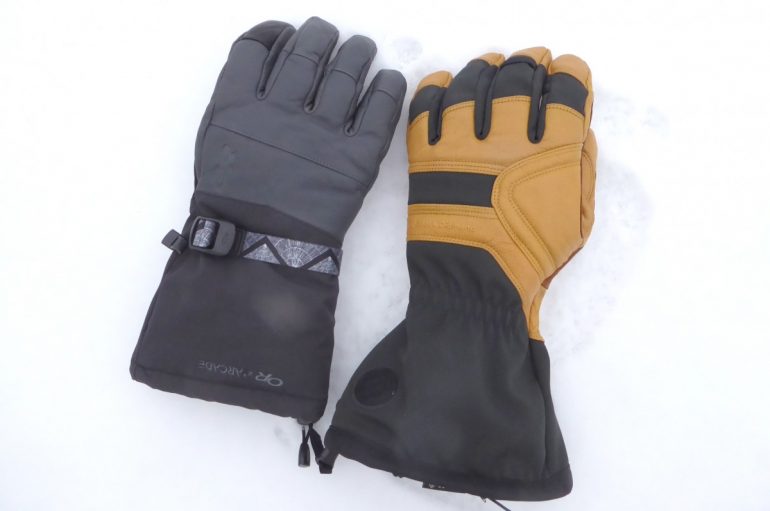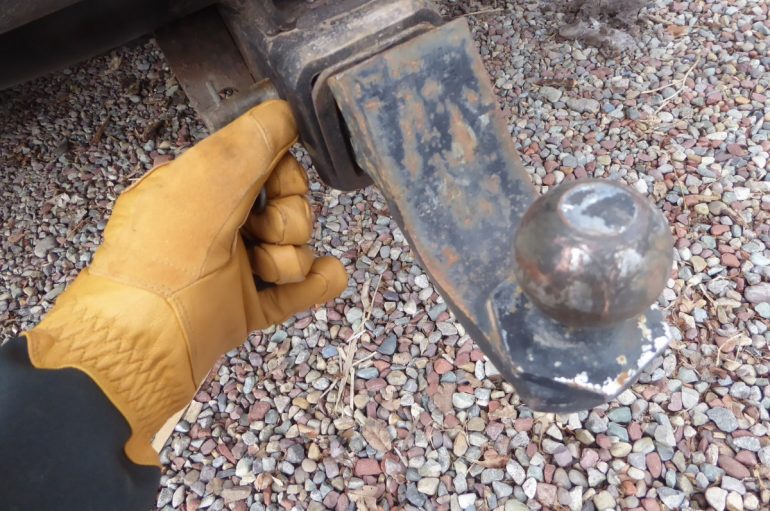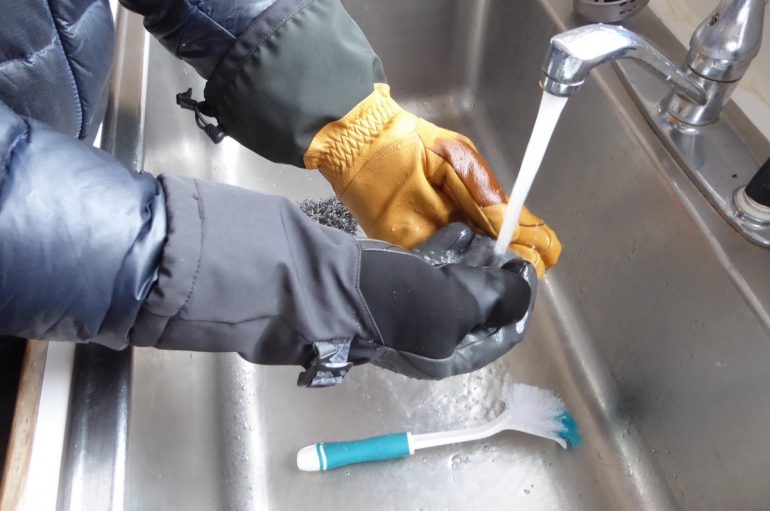I used to have hands for which gloves were often a formality. They were hot hands, with capillary blood swirling through the subcutaneous like equatorial ocean currents, dumping heat in such quantities I could ice climb bare-handed. No more. The effects of age and abuse have rendered my manos average — perhaps less than average. Consequently, it was time to step up my glove game — to begin using something thick and real.
I narrowed down my choices to two products: Black Diamond’s serious looking Crew Pro-Series, and the Outdoor Research subtly appointed grey-on-grey Carbide Sensor. I picked these gloves simply based on the reputability of the makers and my familiarity with their brands. Thus, know this isn’t a broad overview of the glovely ecosystem, but rather a biased effort to narrow my choice from two to one. Please share your favorites in the comments.
Black Diamond Crew Glove
Anyone who’s anybody in gloves knows the BD Guide, that storied Bismark that’s seen everyone from core alpinists to ski patrolers apply their hands to the frigid yonder. The Crew is essentially a Guide without the removable liner. According to BD, the guide is “warmer,” but I doubt that’s the case to any significant degree.
Like the Guide, the Crew is thick, beefy, about as bulky as a glove can be. Thickness and bulk equal warmth, simple as that. As for the none-removable liner, that’s a detriment for multiple back-to-back days of heavy use, but avoids loss of the liner, and saves you from tangles while taking the gloves off and putting them back on. I look at it this way: For expedition use, separate liners are best. If I’m going home every day to a warm, glove drying environment, fixed liner is better.
Crew features
– Stretch fabric over the first and third knuckle, and thick leather.
– The liner is 100 gram fleece on the palm and 170 gram on the hand back.
– In my opinion, the exterior hand-back of the Crew is over-designed. I’m not sure if the elaborate stitching and exposed fabric makes them any more dexterous than using high-quality leather, but they look good and they function fine.
– The Crew is claimed to use “Gore Plus Warm” GORE-TEX technology. I got a laugh out of that. After spending ten minutes digging through over-designed websites I never did learn what Plus Warm really was, other than it’s supposed to be warmer than other forms of GORE-TEX. Reading between the lines, I concluded it’s perhaps nothing more than a slightly less breathable membrain than others. Gore, if you don’t like my take, redesign your website so it actually tells me something.
– Fit of the Crew is about what I expect from a bulky, warm glove. Not particularly dexterous, improving over time with break-in. Note the lack of an adjustable wrist band. I’m not sure where I’m at with that. The Crew can’t be loosened up for easy on-off, but I like the simplicity.
Outdoor Research Carbide Sensor Glove
The OR Carbide Sensor glove accomplishes an impressive combination of warmth and dexterity by virtue of soft, compressable 130 gram insulation in the palm and 200 gram at the back, combined with thin yet full-coverage leather and pre-curved fingers.
Carbide features
– I appreciated the adjustable elastic wrist strip, which I left loose most of the time for easy on-off, and cinched down to provide a feeling of snug dexterity.
– In testing, I found the warmth of the Carbide to match that of the Crew. Where the two offerings differ is in durability. The natural surface leather of the Crew does a good job of disguising wear, while the grey dyed leather of the Carbide shows small nicks that dig into the lighter colored leather under the surface. That’s not a deal breaker, but I’d say for this reason the Crew is a better multi-purpose work glove, while the Carbide lends itself to less abusive endeavors. It’s strengths are light-weight and dexterity.
– The Carbide includes a GORE-TEX layer, which performed just as well as the Crew’s “Gore Plus Warm” in my immersion and cold tests.
More
Both gloves include removable wrist-dangle straps. The Crew gauntlet cones out 4 more centimetres then that of the Carbide — an important consideration if you’ll be wearing a thick sleeved parka. The Carbide leather is factory water-repellent treated. The Crew may be treated as well, but comes with a packet of Nikwax leather treatment I tested and found to be effective.
Conclusions
The lighter weight (by 24 grams) and flexible Carbide is the more dexterous of the two — while the Crew is more durable. After testing by holding an aluminum airbag gas cylinder chilled to negative five degrees farenheit, I give the Crew the edge on warmth — yet the Crew is not significantly warmer than the Carbide. It seemed the under-finger insulation of the Crew was slightly denser than that of the Carbide, resulting in better insulation as I grasped my cold-soaked test metal.
It bears repeating that both gloves have fixed liners. If you’re doing multi-day sojourns in full conditions, consider a glove with removable liner for easier drying, and acceptance of optional spare liners. The Carbide “Sensor” index fingertip will push pixels on your smartscreen, but with little precision.
In all, I’m torn between the two choices, though I swing towards the Carbide simply because of its superior dexterity. Nonetheless, if I’m snowmobiling, working around our cabin, or shoveling snow and fooling with trailer hitches, I’d sport the Crew.
Weights:
BD 148 grams (wet after leather treatment, 184, 36 grams water)
OR 124 grams (wet 139, 15 grams water)
WildSnow.com publisher emeritus and founder Lou (Louis Dawson) has a 50+ years career in climbing, backcountry skiing and ski mountaineering. He was the first person in history to ski down all 54 Colorado 14,000-foot peaks, has authored numerous books about about backcountry skiing, and has skied from the summit of Denali in Alaska, North America’s highest mountain.



